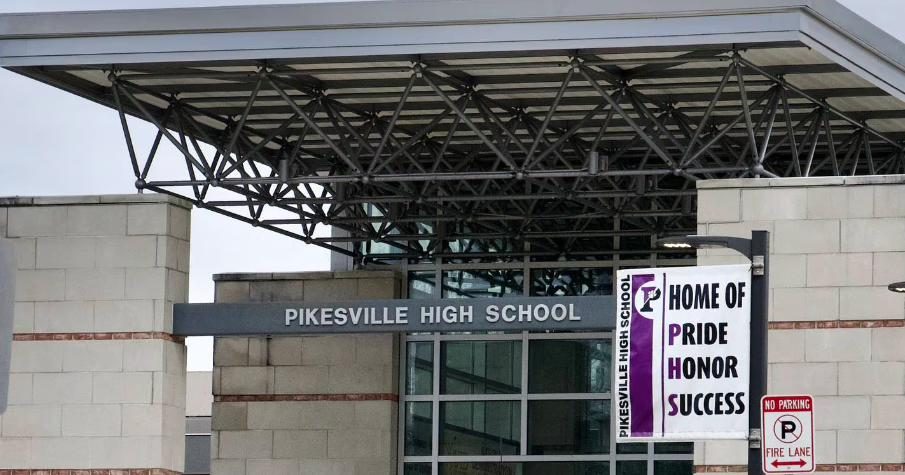A Look Inside The Maryland State Police Crash Team
By BRETT LAKE
Carroll County Times
WESTMINSTER, Md. (AP) -- Police are typically involved in the aftermath of a vehicle collision, though for some, the involvement can last for years.
When it's a serious enough crash, members of the Maryland State Police Crash Team are usually on the scene.
The crash team, part of the state police Commercial Vehicle Enforcement Division, is a unit of eight members who are assigned to various barracks around the state.
In 2011, the crash team responded to 99 statewide incidents. Of those incidents, 61 were fatal crashes and 27 were personal injury crashes. Eleven of the incidents were not crash related.
In Carroll, the crash team responded to three fatal crashes and three personal injury crashes in 2011.
Carroll is not one of the busier counties, said 1st Sgt. Bryan Pearre, the Frederick-based supervisor of the statewide crash team. However, that number has increased so far in 2012.
As of Nov. 27, the team has responded to 12 incidents in Carroll, which includes five fatal crashes and four personal injury crashes.
Statewide, the team has responded to 102 incidents so far in 2012. Of those, 59 have been fatal crashes and 25 were personal injury crashes.
The Westminster, Frederick, Centreville and the North East barracks each have one member assigned to its barrack. Two members are assigned at each the La Plata barrack in Charles County and the Golden Ring barrack in Baltimore County.
These troopers can be seen working the crash scene, reconstructing the events and collecting pertinent data.
Each member has gone through at least 1,600 hours of specialized training. Courses include advanced physics for reconstructionists; collision, pedestrian, motorcycle and commercial vehicle reconstruction; and various specialized classes.
The 22 state police barracks each have a handful of troopers trained in collision reconstruction, though they don't have the same level of training as the eight members of the crash team.
The team handles crashes that involve drugs or alcohol, high speeds, multiple vehicles, multiple fatalities or commercial vehicles, according to Pearre.
They will also assist on some homicide scenes when investigators request the use of their latest equipment, according to Pearre.
From crash to conviction. Once on the scene of a crash, the officer could spend hours gathering and documenting information.
Most of the data collection comes from two key tools. Crash team members are equipped with an electronic total station and crash data retrieval kit which they use to reconstruct a crash scene.
These tools allow the investigators to capture 75 percent more data in 50 percent less time than without the equipment, according to state police statistics.
This cuts down on the traffic congestion the crash may cause, Pearre said.
The electronic total station, similar to a land survey tool, uses infrared lasers to collect crash-scene information. Using this tool, they can collect height, distance and elevation points of areas, various roadway data including tire marks and road lines.
This data is converted into scale drawings of the scene using computer software, which investigators can use to determine certain information including placement and pre- and post-interaction of the vehicles.
"Once we put those in we can get scale drawings of how the vehicles interacted and place the vehicles at the crash location," said Sgt. Jon McGee, a member of the crash team based at the Westminster barrack.
The crash data retrieval kit includes an air bag control module which collects data of the vehicle's air bag deployment.
The tool plugs into most vehicles under the steering wheel and retrieves information including pre-crash speed, changes in velocity, angle of the steering wheel and brake indicators.
Investigators also use a friction test in which they can determine frictional values, elevation changes and speed loss associated with skid marks on the road.
After reports are completed they consult with the local State's Attorney's Office for a determination on possible charges.
With all the reports and testing the crash team handles, investigators spend months reconstructing the scene and determining factors and causes. The reports also go through an extensive review process, which McGee said weeds out all the questions that may come up in a trial.
By the time the investigation is finalized and in the event charges are brought by the State's Attorney's Office, the crash team is confident their cases are strong, McGee said.
Their record in court bears that out. In the last six years, investigations handled by the crash team that resulted in criminal or traffic charges have a 100 percent conviction rate, according to Pearre.
Pearre attributes the conviction rate to the review process of the cases and reports, and the work of the crash team troopers.
(Copyright 2012 by The Associated Press. All Rights Reserved.)



